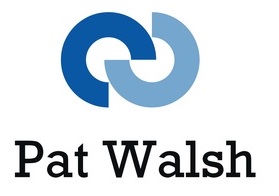From July 15th to July 17th 2015, I took part in an online course called Rapid Software Testing Applied (RSTA) where the techniques and practises of Rapid Software Testing (RST) are used on a real-world software product. The course was run by James Bach, one of the main movers and shakers in the world of Rapid Software Testing. Being located in Washington State, the course was run on West Coast / PST so I was doing the course in the evening, from 1700 to 2330, and there were attendees from all over the world, such was the demand.
The course was intensive – as it covered both the outlines of RST and also then applying that to a real-world product immediately. Maintaining the real-world feel, we were tasked with assignments each day, were also logging bugs as we found them and basically pulling apart the product, which was a website in this case. As well as the assignments each day, James Bach would also provide us with feedback on different participants assignment submissions, enabling us to get some great feedback and to pick up some tips along the way.
The course quickly enabled me to understand the main elements of Rapid Software Testing, and I would break it down to these three main factors:
- it’s a skill-based technique
- it’s context-driven
- it utilises risk analysis to focus on the important areas to test
It also enabled me to understand more the specific qualities necessary to do Rapid Software Testing, and I would break it down to these elements:
- ingenuity – the ability to understand and pick up the skills necessary to do the testing plus the ability to quickly learn the product being tested
- resourcefulness and, again ingenuity, to identify and use whichever tools are necessary to test the product
- good communication skills, in order to establish the customer’s priorities, to discuss issues with developers and other stakeholders and also to communicate progress
- good time-organisation skills, to ensure the customer’s priorities are fulfilled
Being an online course, many different tools were used to both run the course and to enable us all to chat to each other, plus to provide info and links throughout the course. These tools included GoToWebinar, HipChat, JIRA and Confluence. So putting all these together, really did give it a real-world project feel.
Overall, I would definitely recommend the course to anyone who’s interested in progressing their career as a tester, both to quickly engage with the RST techniques and to learn much more about the art of testing in general, especially when it’s from a leading light in the testing world.
RSTA Course – Quick overview of Day to Day
Day 1
RST Overview
The Exploratory Approach
Note taking during Testing
Survey Testing with Note Taking
Spontaneous Testing
Deliberative Testing
Testing Tempo
Day 2
Bug Reports – were reviewed with feedback
How to Analyze a Product
Product Coverage Outline (PCO)
Heuristic Risk Analysis
Analyzing the Product
How to test in Sessions
How to make a Test Strategy
Day 3
Test Oracles
How Shallow Testing becomes Deep Testing
Automation
Deep Testing of the Product
Test Reporting
Links
Rapid Software Testing explained on James Bach’s website
RSTA info page

